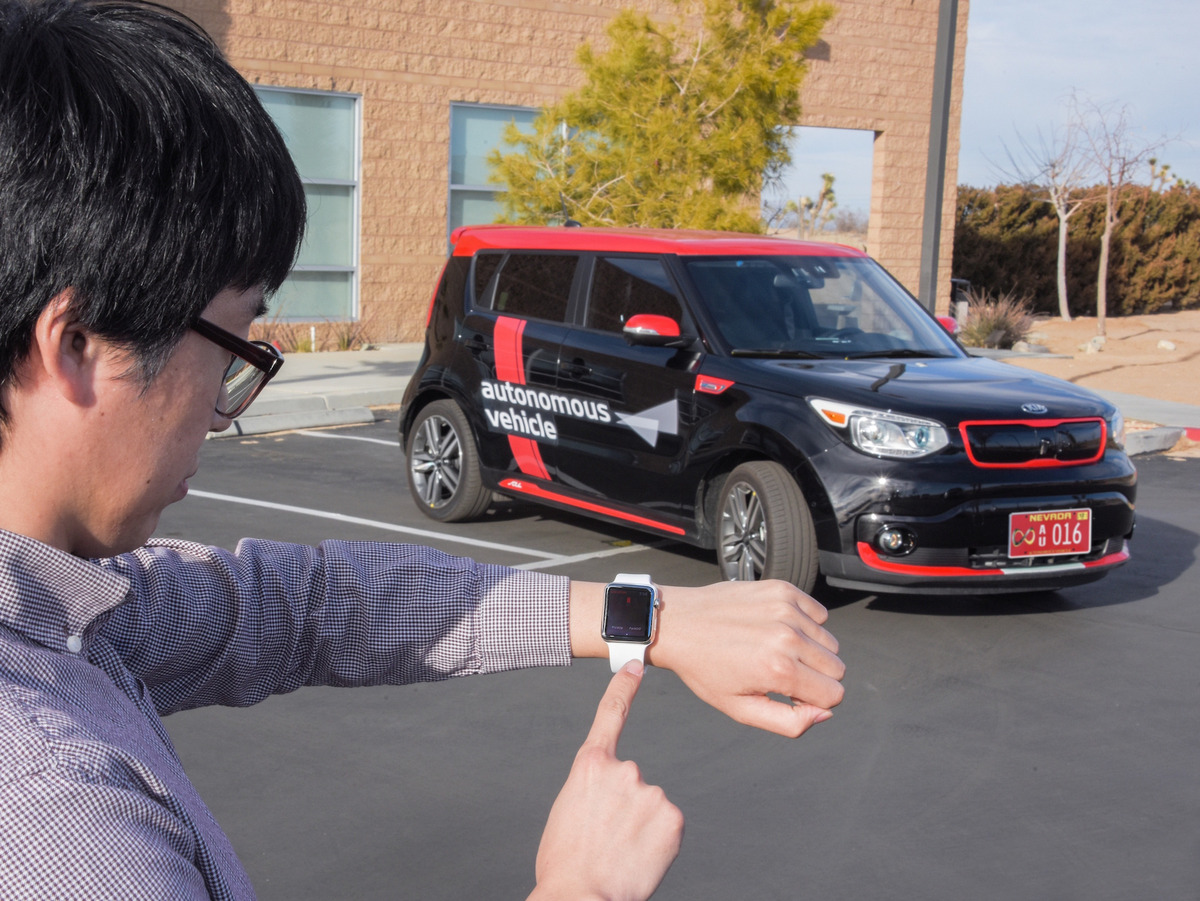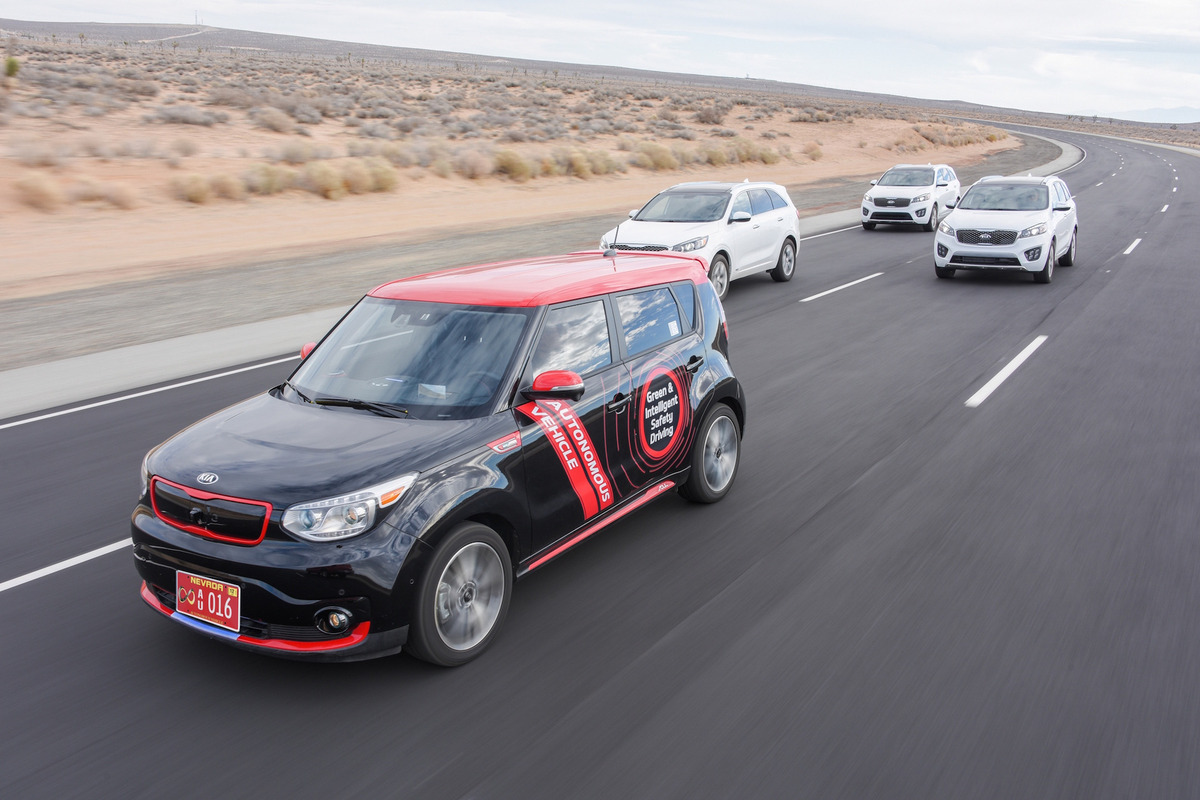
If you thought the Tesla Model S would be the only EV driving itself around for the near future, well, you’d be wrong. Kia just got its license to drive fully autonomous Soul EVs on the public roads in Nevada. But that’s not the Korean carmaker’s only autonomous tech announcement made at the 2016 International CES Tuesday.
Kia will also be launching a new autonomous driving technology sub-brand called “DRIVE WISE” (I’m not yelling; it really is in caps). With DRIVE WISE, Kia aims to introduce semi-autonomous tech to its consumer cars by 2020 and fully autonomous models by 2030. Currently, the Tesla Model S is semi-autonomous and Tesla hasn’t officially announced when it plans to release autonomous EVs—although CEO Elon Musk has said his company is just two years away from fully autonomous driving.
More than setting dates, Kia has also named a lot of its semi- and full-autonomy systems that it is currently developing for those anticipated launch dates. They include, Highway Autonomous Driving (HAD), Urban Autonomous Driving (UAD) and Autonomous Valet Parking — amongst others.
I name those three because, to me, they’re most intriguing, as —generally— most people don’t consider highway and urban autonomy different. However, they are. And Kia spells out how.
Highway Autonomous Driving (HAD) will lean heavily on radar and digital camera information to keep within the lane markings. Urban Autonomous Driving (UAD), however, will use GPS sensors to identify the car’s position on the road, allowing it to safely navigate through densely-congested city environments while responding to live traffic updates.

And Autonomous Valet Parking, as discussed by other carmakers, including Audi, allows drivers to get out of their Kia and let the car park itself remotely, activated using the smart key or a smartwatch.
Intriguingly, Kia’s DRIVE WISE will also include a new Human Machine Interface (HMI) that it’s showing at CES called I-Cockpit that incorporates gesture controls, fingerprint recognition and smart device connectivity. With I-Cockpit, a driver can pull up all their favorite settings just by scanning a fingerprint and then control the infotainment without touching it.
This is truly a lot for Kia to dump in one announcement. But, really, it needed to, otherwise it might fall behind all the other global automakers that have been testing autonomous cars for years and implementing gesture controls in cars (the 2016 BMW 7 Series, for example).
